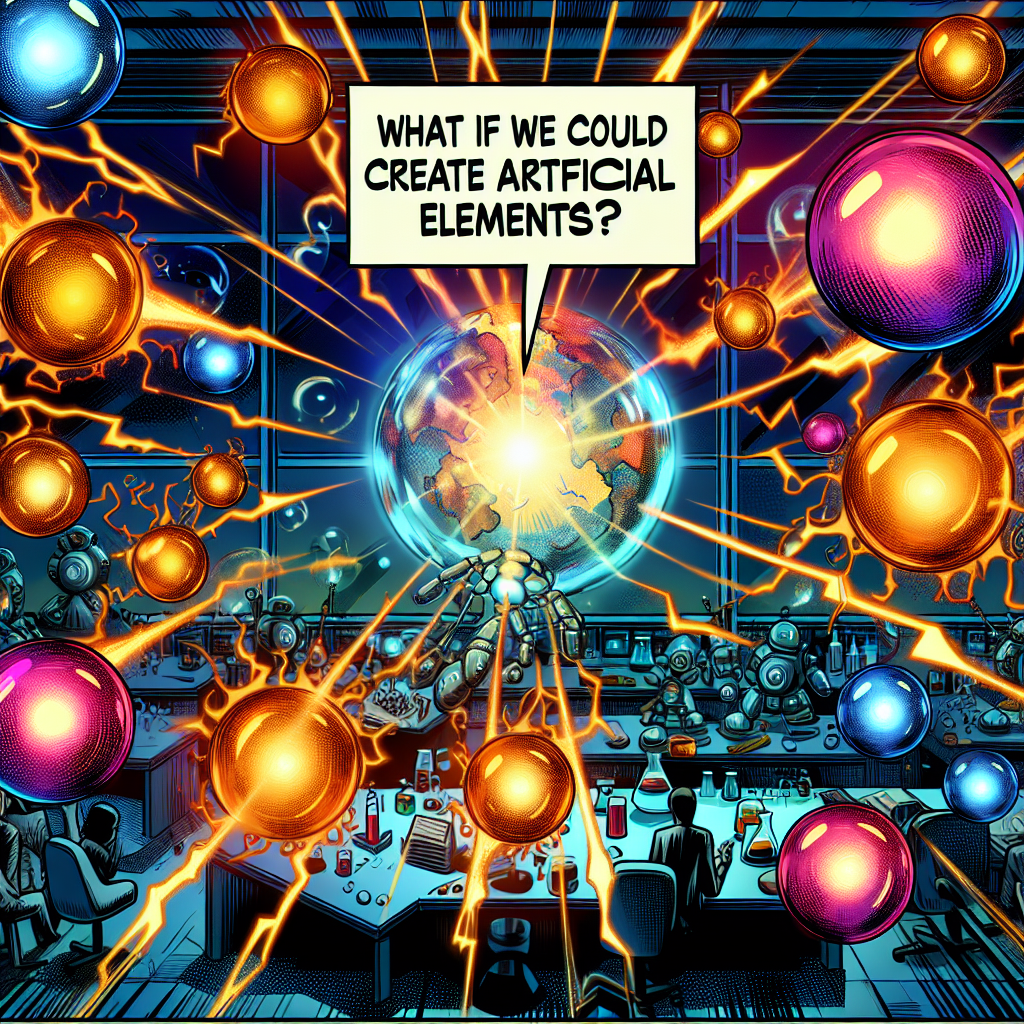The periodic table, a sacred tome of chemistry, lists the elements, from hydrogen to tennessine, in a neat and orderly fashion. But what if we could create artificial elements, ones not found in nature?
To understand this concept, let's delve into the world of atomic nuclei. Atoms, the building blocks of matter, consist of protons, neutrons, and electrons. Protons, positively charged, reside in the nucleus, while neutrons, with no charge, accompany them. Electrons, negatively charged, orbit around the nucleus.
Imagine the nucleus as a crowded party, where protons and neutrons mingle. The number of protons defines the element, like a unique party hat each guest wears. Hydrogen has one proton, helium has two, and so on. Now, what if we could create a party with, say, 123 protons? That would be an artificial element!
Creating such an element would require manipulating the nucleus, adding or removing protons and neutrons. This is no easy feat, as the strong nuclear force, which holds the nucleus together, is incredibly powerful. It's like trying to reorganize a packed dance floor: you need to carefully move the right "dancers" (protons and neutrons) to create the desired arrangement.
One approach to creating artificial elements is through nuclear reactions. Imagine collisions between atomic nuclei, like high-speed crashes. When two nuclei collide, they can merge, forming a new, heavier nucleus. This process, called nuclear fusion, is how stars create elements in their cores.
However, creating artificial elements with many protons requires an enormous amount of energy, comparable to the intense heat and pressure found in stars. On Earth, scientists use particle accelerators, like the Large Hadron Collider, to smash nuclei together at incredible velocities. These collisions can produce synthetic elements, which then decay rapidly into more stable atoms.
The most recent additions to the periodic table, tennessine (Ts) and oganesson (Og), were created in just this way. Researchers at the Joint Institute for Nuclear Research in Russia and the Lawrence Livermore National Laboratory in California bombarded americium-243 with calcium-48 ions, producing four atoms of tennessine, which decayed almost instantly.
Artificial elements have unique properties, different from their natural counterparts. For instance, oganesson is predicted to be a noble gas, similar to neon or argon, but its electrons are arranged differently, making it potentially more reactive.
As we venture further into the realm of artificial elements, we may discover new properties and applications. Imagine creating ultra-dense materials or superconductors, which could revolutionize energy transmission or quantum computing.
But there are challenges to consider. As artificial elements decay, they release radiation, posing health risks to humans and the environment. Additionally, producing these elements requires massive amounts of energy, which can be costly and environmentally taxing.
To overcome these hurdles, scientists are exploring alternative methods, such as using supercomputers to simulate nuclear reactions or developing new particle accelerators that consume less energy.
In the realm of artificial elements, we're pushing the boundaries of human knowledge, rewriting the rules of the periodic table. The possibilities are endless, and as we continue to explore, we may uncover secrets that could transform our world.
To create artificial elements, we must first understand the intricate dance of protons and neutrons within the nucleus. It's a delicate ballet, where one misstep can lead to instability or even elemental destruction.
Scientists have developed various techniques to study these nuclear reactions, including:
- Nuclear spectroscopy: Analyzing the radiation emitted when nuclei decay, helping us understand the nuclear structure.
- Particle accelerators: Smashing nuclei together to create new, artificial elements.
- Theoretical models: Using complex equations to predict the behavior of nuclei and simulate reactions.
Each technique provides a unique perspective on the nucleus, allowing us to refine our understanding and create new, artificial elements.
As we forge ahead, we may uncover new applications for artificial elements in medicine, energy, or advanced materials. The possibilities are vast, and the journey to create these elements is a testament to human ingenuity and curiosity.
The creation of artificial elements is a rich tapestry, woven from the threads of nuclear physics, chemistry, and materials science. As we continue to explore this frontier, we may uncover secrets that could transform our understanding of the universe and our place within it.
In the realm of artificial elements, the boundaries between science fiction and reality blur. We're no longer limited by the elements found in nature; we're creating our own, pushing the frontiers of human knowledge and innovation.
This is an exciting, uncharted territory, where scientists can pioneer new discoveries, challenge our understanding of the universe, and create a brighter future for all.

Popular Space Questions
Find answers to the trending space questions being asked by our community on social media.
- How many galaxies are there in the universe?
- How far is Pluto from Earth?
- How many planets are in the Milky Way?
- How many planets are in our solar system?
- What would happen if a rogue planet entered our solar system?
- What are the planets in order?
- How big is the universe?
- How big is the Earth?
- What if we found a way to manipulate gravity?
- How far is the Sun from Earth?